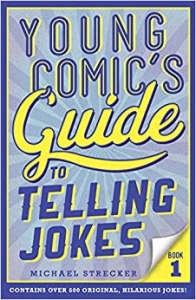Tired People Don’t Laugh Much – or Read Much
In Tuesday’s Say It For You post we saw how a request from a diner to a waitress elicited the wrong response. In blogging, failing to consider your target readers can result in eliciting a reaction to your blog that is not quite what you’d hoped…
Incorporating humor in a blog is especially tricky. “Know your audience. Not everyone will think every joke is funny,” advises Michael Strecker in the book Young Comic’s Guide to Telling Jokes.
Strecker offers several Rules of Thumb, each of which can be adapted for blog content writing in general:
- Never tell more than three jokes in a row on the same subject, because audiences get tired and don’t laugh.
Business blogs are of necessity focused on a singular topic, but the information can be presented in different ways and in different formats.
2. Don’t read your jokes, but do read, read, read. The more words you know, the more jokes you’ll be able to understand and tell.
At Say It For You, I teach that business bloggers are going to need to spend at least as much time reading as writing, in order to keep up on what others are saying on the topic, what’s in the news, and what problems and questions have been surfacing that relate to what the client offers.
3. Timing is very important. Don’t tell your jokes too slowly or too fast, or the audience will either miss the point or get bored before you get to it.
Over the years of dealing with many different blog writers and blog topics at Say it For You, I’ve noticed that certain content falls flat with certain audiences is that it’s based on cultural allusions that are simply not that familiar to that audience – they don’t “get it”. Here are two “riddles” that show what I mean:
How did the dentist pay for his vision exam? An eye for a tooth.
(The allusion is to a passage from the Bible about punishing a man who injures another – “An eye for an eye, a tooth for a tooth”)
What do you do at a math party? Eat pi and square dance.
(The allusion is to pi, which is the ration of a circle’s circumference to its diameter, approximately 3.14.)
Whether telling jokes or writing blog content, matching our writing to our intended audience is part of the challenge we business blog content writers face.






Follow us online!